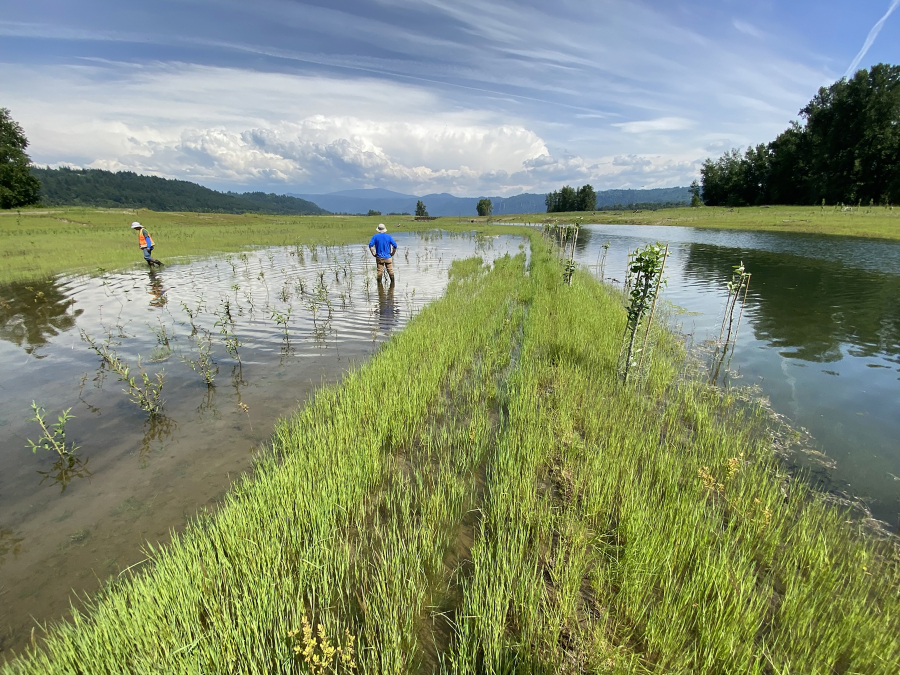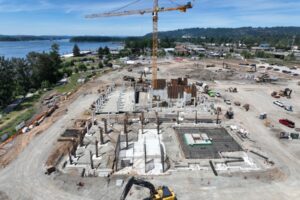A little more than one month after its completion, the new floodplain at Steigerwald Lake National Wildlife Refuge has met its first challenge.
Local and regional officials welcomed the public back to Steigerwald on May 7 after a nearly 2-year closure for a project that reconnected the Gibbons Creek watershed and Steigerwald Lake to the Columbia River in an effort to prevent flooding in the area, including at the Port of Camas-Washougal’s industrial business park.
On June 13, after days of heavy rainfall, melting snowpack and an unusually wet spring, the river crested its banks near the wildlife refuge, testing the new floodplain.
Chris Collins, the program lead for the Lower Columbia Estuary Partnership, the Portland-based nonprofit that coordinated the reconnection project, said he wasn’t shocked by the timing of the flooding.
“(We’ve noticed) how often we have big flood events right after we finish projects,” Collins said. “We joke that the best predictor of an upcoming flood is us completing a construction or restoration project. But we designed the project with events like this in mind. We are excited to have the water back on the site. It is a good test.”





